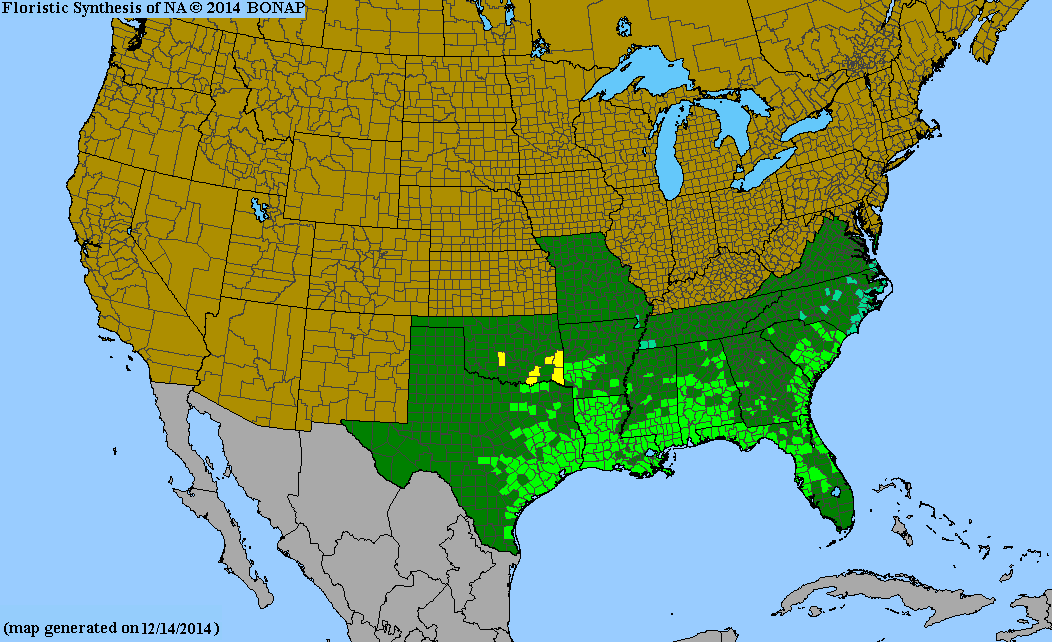Aquifoliaceae
yaupon holly
Ilex vomitoria
Plant Type
Small Tree/Large Shrub (10-25 ft)
Typical Size
10-20 ft. tall
8-12 ft. wide
Tolerant of
Drought, Occasional Flooding, Salt Exposure
Propagation
By seed, By cutting
Plant Propagation Notes
For best germination, plant seeds immediately after collection. Seeds may be pre-treated with double-scarification. Semi-hardwood cuttings can be rooted in late fall.
Plant Planting Notes
This plant is known to produce suckers. It will produce more fruit and have a thicker canopy in sunnier locations but will tolerate deep shade and a wide range of soil types.
Plants/Diseases
Holly leaf miner, spider mites, whitefly, and scale are occasional problems. Leaf spot, leaf rot, tar spot, and powdery mildew are potential disease problems.
Wildlife Benefits
Nectar/pollen source for pollinating insects, Host plant for butterfly larvae, Fruit/seeds for birds
Leaves
1.5-inch oval leaves are glossy green and leathery with toothed margins and rounded at base and tip.
Flowers
Small greenish-white flowers that appear on male and female plants in the spring (April). The flowers are fragrant but generally inconspicuous. They grow solitary or in pairs and are clustered on peduncles in leaf axils. Blooms from March to May.
Fruit
1/4 inch red drupes in clusters mature in fall and persist into winter.
Toxicity
All Ilex species are mildly toxic when consumed. Sensitivity varies by individual.
Ethnobotanical Use
The leaves of Ilex vomitoria were used for ceremonial tea called the black drink. When consumed in large quantities, it had an emetic effect which is now memorialized by the specific epithet vomitoria. Young leaves and twigs can be used to make a caffeinated tea.

USDA Hardiness Zones
7, 8, 9
Light Exposure
Full Sun, Part Sun/Shade, Full Shade
Soil Moisture
Medium, Moist
Soil Drainage
Well-drained
Soil pH
Acidic (less than 6.0), Neutral (6.0-8.0), Basic (greater than 8.0)
Native in South Carolina?
Yes
Plant Native Habitat
Maritime forests, other dry sandy forests, shrublands, and disturbed areas
Global Conservation Status (NatureServe)
Secure (G5)
Federal Conservation Status (USFWS)
Not Listed
Distribution Notes
Within South Carolina, Yaupon holly is common in the Coastal Plain, introduced in the Piedmont, and absent in the Mountains.


